The Alhambra in Granada has long occupied a romanticised dreamy corner of my imagination; an exotic part of Spain that epitomised the country’s lengthy relationship with the Moors.
When I imagined the Alhambra, I visualised grand Moorish palaces amidst a countryside of olive groves; I remembered tales from my childhood about warriors like El Cid and thought of Moorish Christian conflicts lasting centuries… perhaps destined to last forever.
It seemed a magical place where North Africa had blended into Europe resulting in a sometimes bloody, sometime peaceful clash of cultures and religion.
The Alhambra is a chameleon of a structure. It started life as a citadel in the 9th century before enjoying the grandness being a Muslim palace in the 14th century before changing religion to Christianity and providing comfort for European aristocracy from the 16th century. Somewhere along the line it faded from fashion and fell into disrepair before rising from the ashes to become one of Spain’s major attractions and a UNESCO World Heritage Site.
The question was could this personality changing icon of Moorish Iberian culture, which throughout history has inspired kings, warriors, writers and poets, live up to the fantasy from a little boy’s mind?
A View of the Alhambra
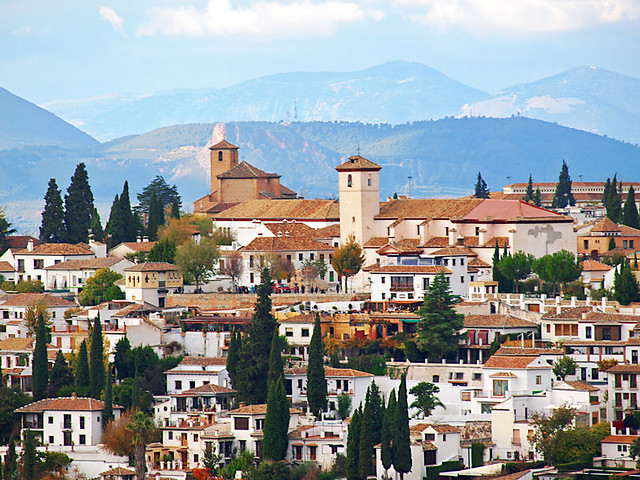
In truth I was more impressed with the view from the Alhambra, especially from the Queen’s Robing Room, than the views of it from below. It was easy to imagine that the views over Granada’s red-tiled rooftops, medieval churches and cypress trees to the Sierra Nevadas beyond hadn’t changed in centuries.
Pillar of Carlos V
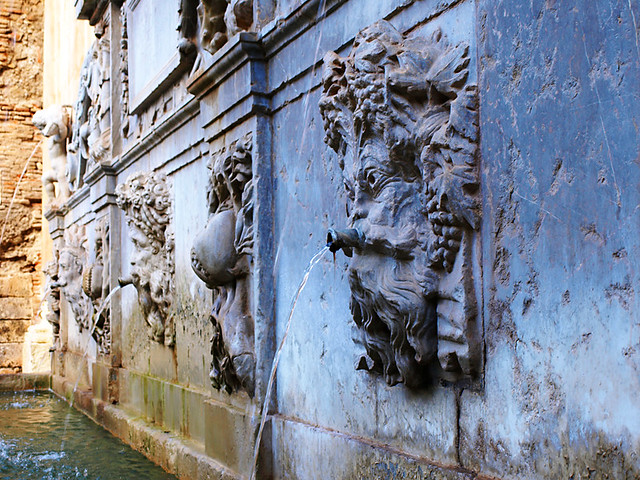
This intriguing fountain just outside of the Alhambra walls has nothing Moorish about it. With Hercules and Apollo featuring, it’s allegiance is decidedly Greek and Roman mythology. There’s some debate over what the fountain is said to represent; either the three Granada rivers of Darro, Beiro and Genil or possibly spring, summer and autumn. As winter seems to be missing, the former seems more likely.
Puerta de la Justicia
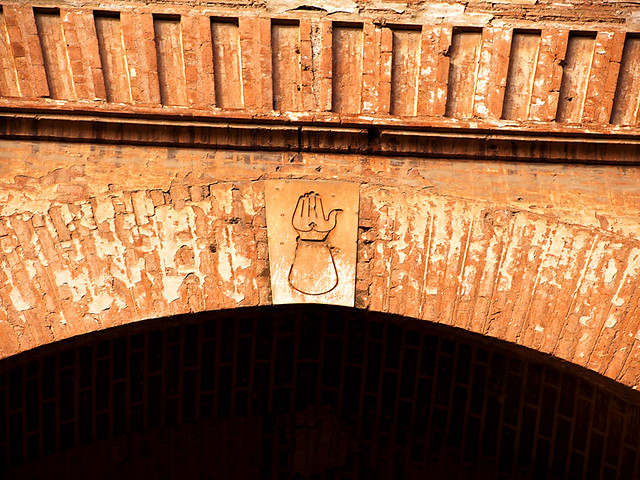
The Alhambra’ largest gate, the Gate of Justice, is very much in the Moorish style with the hand of Fatima, a talisman to ward off evil, guarding its arched entrance.
A Taste of Morocco

Stepping inside is like beaming into the Medersa Ben Youseff in Marrakech. Walls and ceilings have been painstakingly carved and are hypnotically beautiful. I can’t imagine how they would have looked in their original state when the intricate designs would have been painted in vibrant colours.
Court of the Myrtles
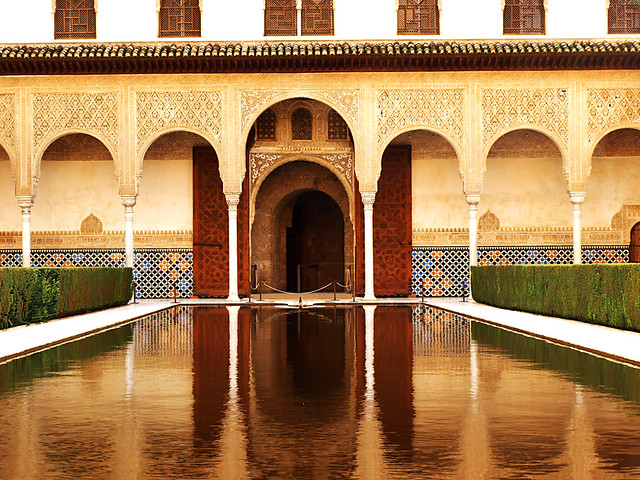
One of my favourite parts of the Alhambra, the Court of the Myrtles is so named because of the plants that line the long pool. In both Spanish and Moorish houses, courtyards were the focus of family life. Coincidence or influence?
A Spot to Contemplate
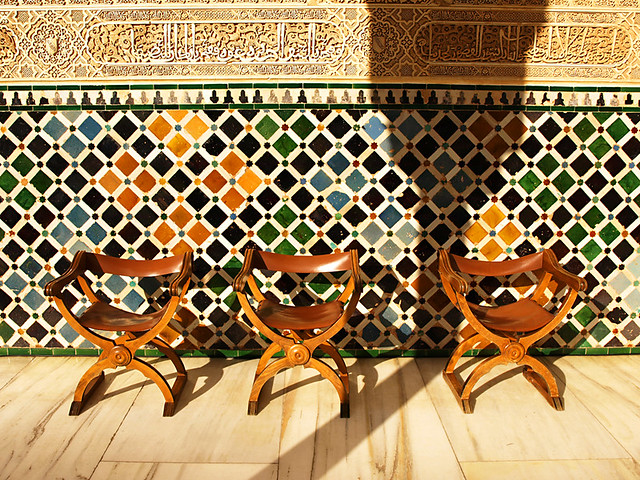
Simply a lovely little spot to rest awhile and absorb the Alhambra’s charms.
Court of the Lions

One of the enduring symbols, the purpose of Court of the Lions is to be a bit of a show off really. It’s an example of the Alhambra’s wonderfully imaginative decorative qualities as well as a display of its ingenious water systems – something to do with how the water can flow throughout the place in shallow channels without spilling out. I’m a right-brainer so, unlike the water, the explanation sort of flowed over me.
Court of Lindaraja
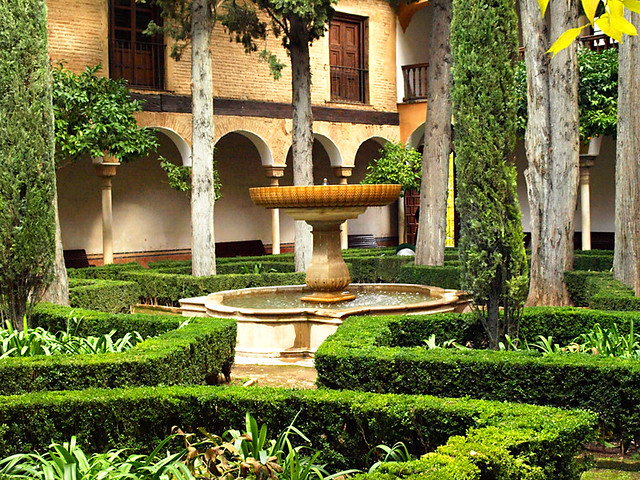
A total contrast to the Court of the Lions, the Court of Lindaraja has more greenery, a baroque fountain and a European vibe. There’s almost a feeling that the Alhambra changes architectural direction and even continents as you walk from Moorish corridors into a courtyard that looks as though it belongs in an Italian villa.
The Partal Gardens
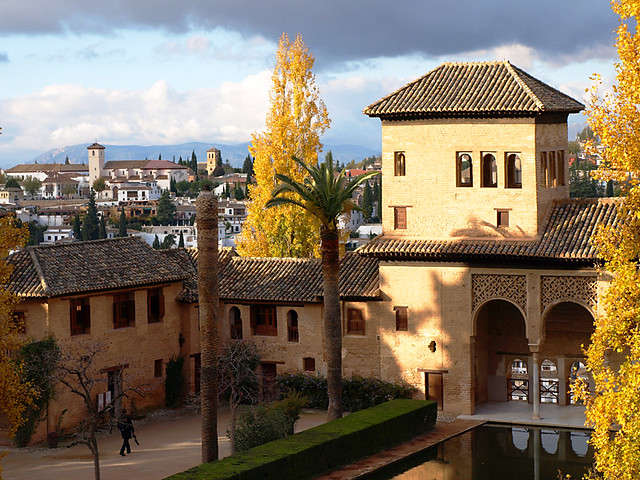
The morphing from Moorish influences to European continues in the neat terraces of the Partal Gardens. No surprise as this part of the Alhambra is just over a century old.
The Generalife
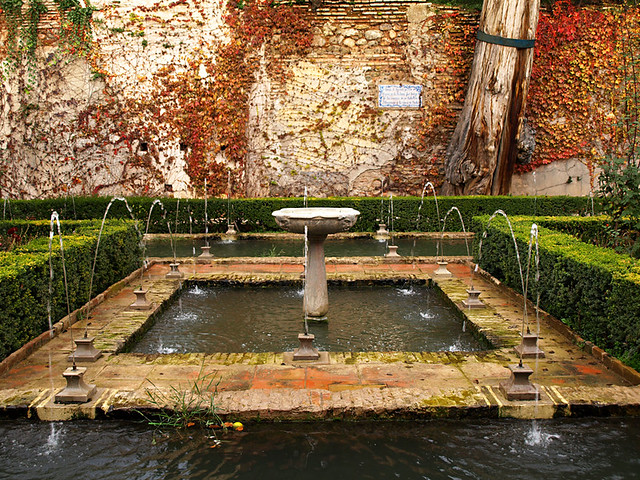
Despite sounding like the place to pick up car insurance, the vegetable and flower gardens of the Generalife represent a softer, possibly even more charming face of the Alhambra. Nobody seems sure where it got its unsexy name; although, as always, there are plenty of opinions. The most popular being it had something to do with a gardening architect (alarife in Spanish). Maybe the gardening architect had also once been a general?
My favourite spot was the Sultana’s Court (above) which had an air of sad beauty about it. The legend has it that one of King Boadbil’s wives enjoyed romantic liaisons in this garden with a knight from a neighbouring tribe. Needless to say it didn’t end well and the lovers had an enforced bitter and bloody break up.
So did the real Alhambra live up to the one in my mind? Commanding and beautiful though it was I didn’t get the same sense of history oozing from its bricks and mortar that I have in some other historic sites. It was visually stunning but, having not long previously wandered around some of the great palaces in Morocco, there weren’t really any surprises and the different custodians over the centuries have left it with a bit of a confused personality.
In short, although it impressed and interested, the Alhambra didn’t move me.
Granada on the other hand totally exceeded expectations
Entrance to the Alhambra costs €13 but there are various packages available. Tickets are available to purchase online but if you take the over 65 option you need to get your ticket stamped otherwise you can’t get through the turnstile. The Alhambra is open from 8.30am to 6pm in winter months and 8.30am to 8pm in summer months.
Jack is co-owner, writer and photographer for BuzzTrips and the Real Tenerife series of travel websites plus lots of other things. Follow Jack on Google+



I really enjoyed the Alhambra, even though it rained almost nonstop during our visit. Your comment comparing it to Morocco, though, makes me wonder if I had been there first, instead of the other way around, would I have been as impressed. I’m not sure. Interesting thing to ponder.
I agree about the views being more spectacular as well. I especially enjoyed the views from the Albaicin looking up from the valley.
It was bitterly cold when we were there. The upside was that there were hardly any other visitors. We thought it would be mobbed.
I also felt there was a sense of aloofness about the Alhambra, lording it above Granada. Whereas in Marrakech its equivalent can be smack bang in the heart of the action in the Medina.